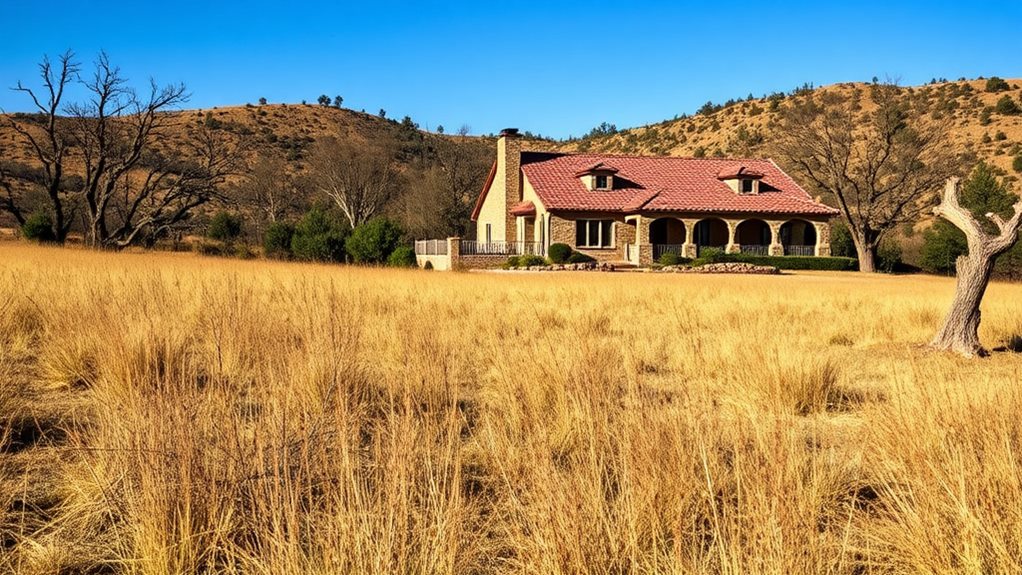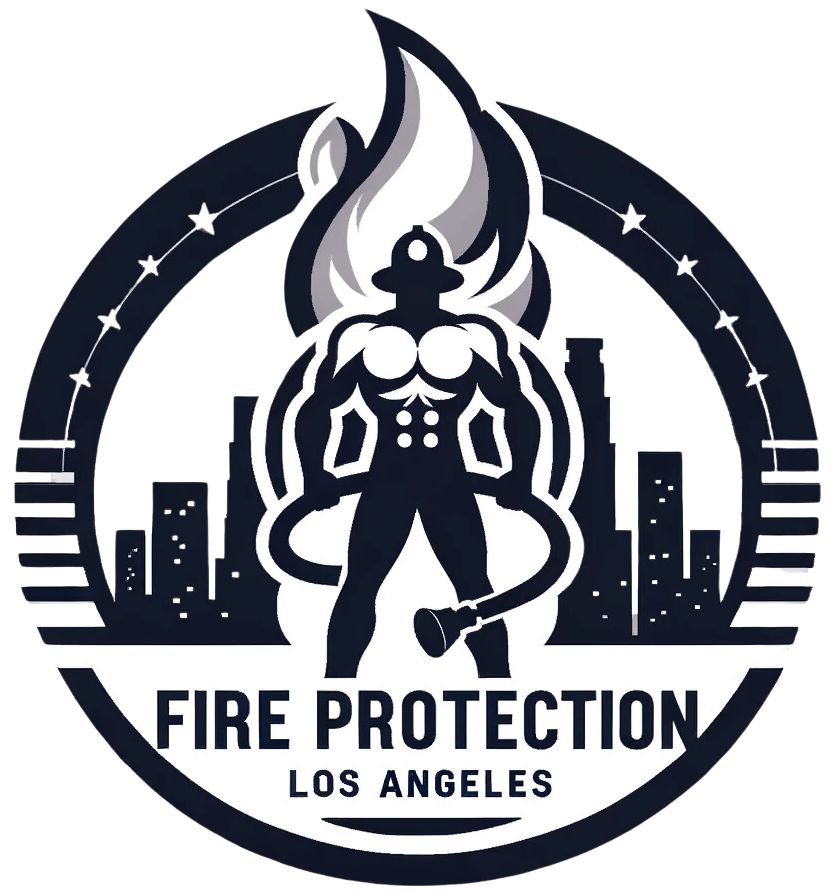To fireproof our California homes, we should start by creating defensible space around our property. This means clearing flammable materials within five feet of the house and maintaining a 30-foot greenbelt. We can use fire-resistant materials for our roofs and siding, like metal or stucco. Installing ember-resistant vents and non-flammable chimney screens will further protect us. We also need to prune trees and regularly clean gutters to reduce fuel. Finally, having a visible address and a water supply ready for emergencies is vital. If we explore further, we can discover even more effective strategies to enhance our home's safety.
Wildfire Threats to Homes

When it comes to wildfire threats, we can't ignore the harsh realities facing California homes. Wildfires pose considerable dangers, not just from direct flames but also from radiant heat and flying embers. These embers can ignite structures up to a mile away, making it vital for us to protect our homes.
Implementing affordable solutions for fire resistance can greatly increase our chances of safeguarding our properties. In high-risk areas, having a solid wildfire home protection strategy is essential. One of the most important steps we can take is to create defensible space around our homes. This means maintaining clear zones free of flammable materials that can catch fire easily. By doing this, we help reduce the chances of embers igniting our homes during a wildfire event.
It's also worth noting that homes built after 1996 have a higher survival rate during wildfires, thanks to modern fire-resistant features. This highlights the importance of construction methods in fire protection.
In addition, statistics show that over 73% of homes lost in the Camp Fire were within 59 feet of another burning structure, emphasizing the need for spatial considerations.
Let's work together to implement these strategies and keep our homes safe from wildfires.
Home Hardening Strategies
To effectively safeguard our homes against wildfires, implementing home hardening strategies is essential. The first steps we can take include choosing fire-resistant materials for our roofs. Options like composite, metal, clay, or tile greatly enhance our home's defense, especially when combined with fire-resistant design principles.
Next, we should install non-flammable chimney screens to prevent embers from escaping and igniting nearby structures.
Another important aspect of hardening our homes is upgrading our windows. Dual-paned tempered glass windows are necessary, as they withstand higher heat exposure and are less likely to break during a fire.
Regular debris removal from roofs and decks is critical, too; accumulated flammable materials can act as fuel during a wildfire.
We can also enhance our protection by using noncombustible mesh for vents. This effectively blocks ember entry and reduces the risk of ignition in attics and basements.
Additionally, installing noncombustible gutter covers can help keep our gutters free from flammable debris.
By focusing on these home hardening strategies, we can take considerable steps toward fireproofing our homes and improving our wildfire resistance.
Together, let's commit to making our homes safer and more resilient against the threat of wildfires.
Emergency Preparedness

Emergency preparedness is essential for protecting our homes and families during wildfire season. One of the first steps to protect our property is maintaining a visible address marking. This guarantees emergency responders can quickly find us when every second counts.
We should also clear a 10-foot zone of vegetation on both sides of our driveways, allowing easy access for emergency vehicles. Creating a defensible space around our homes is critical for fire prevention. Gates should open inward and be wide enough to accommodate these vehicles.
Regularly cleaning our rain gutters is important, as debris like pine needles can ignite and help reduce fire risks. We can also consider installing noncombustible drip edges for extra protection.
In addition, preparing a water supply is essential. We can install hoses and supplementary sources like cisterns or rain barrels to assist firefighters during an emergency.
These steps to protect our homes in the first five feet around our property can greatly prevent embers from igniting our homes. By hardening our homes and being proactive, we not only safeguard our property but also guarantee our loved ones are safe during wildfire season.
Let's take these actions together to create a more resilient community.
Fire-Smart Landscaping
Creating a fire-smart landscape around our homes can greatly enhance our protection against wildfires. To help achieve this, we should focus on several key strategies.
First, we need to clear dead plants and debris from within five feet of our homes, as these can serve as fuel for fires. Additionally, implementing comprehensive fire protection services can further safeguard our properties.
Next, we should consider incorporating fire-resistant and drought-tolerant plants, such as native California herbs like lavender and sage, which can markedly reduce fire spread.
Maintaining an irrigated greenbelt of at least 30 feet around our homes is also vital. This healthy, hydrated vegetation helps slow the spread of fire.
In addition, we must choose landscaping materials wisely; using noncombustible mulch instead of organic options can create a safer perimeter.
Regular maintenance of our trees and shrubs is essential, too. We should prune branches to guarantee they're kept at least six inches off the ground, which reduces fire risks.
By focusing on fire-smart landscaping, we're not just hardening our homes against wildfires, but we're also enhancing the beauty of our surroundings while staying safe.
Structural Enhancements

While fire-smart landscaping greatly boosts our home's defenses against wildfires, structural enhancements play an essential role in further fortifying our properties.
To protect our homes, we should consider using fire-resistant materials like stucco, fiber cement, or treated wood for exterior walls. These materials help secure our vulnerable parts against flames and heat.
When constructing decks, opting for ignition-resistant materials such as composite or metal can minimize fire risks while improving durability.
We can also enhance safety by installing patio covers made from materials that match our roof's fire-resistance rating.
Garages deserve special attention too. By equipping them with ember seals and storing firefighting tools, we can be better prepared for emergencies.
Additionally, when building fences, let's use noncombustible materials where they connect to the house to prevent fire spread.
Lastly, if we've shingle roofs, we should consider replacing them with more fire-resistant options.
Final Thoughts
In our quest to protect our homes from wildfires, we've learned that preparation is our strongest armor. By hardening our homes, preparing for emergencies, and creating fire-smart landscapes, we can stand resilient against nature's flames. Just as a sturdy tree withstands strong winds, our efforts can help safeguard our homes. Together, let's embrace these fireproofing tips and turn our homes into safe havens. After all, a little preparation today can lead to a safer tomorrow.








